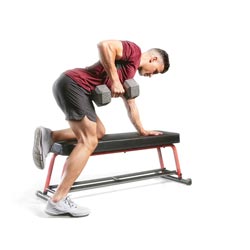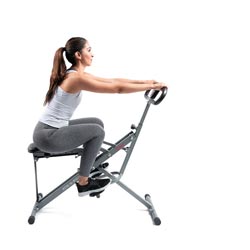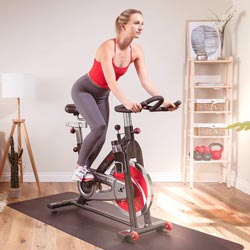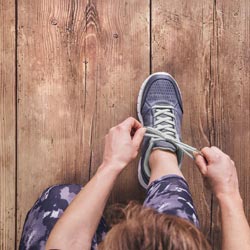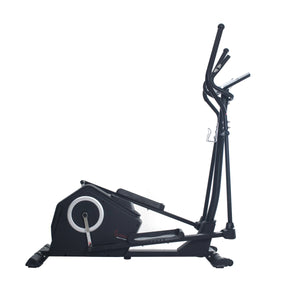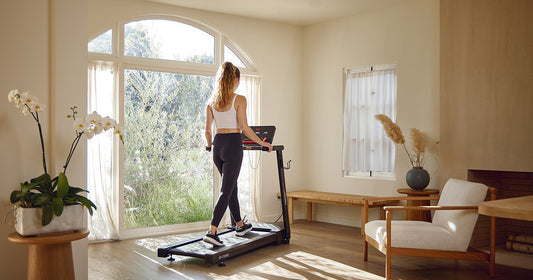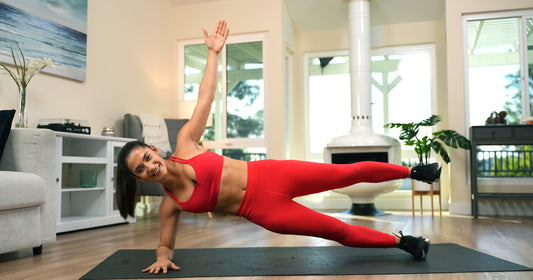The new year brings new goals, new routines, and a new sense of motivation. While this big drive at the start of the new year is exciting and feels like anything is possible, the sad reality is this “gas pedal-to-the-floor” mindset tends to run out FAST. One study found that 23% of people give up on their New Year's resolutions within the first week of the year.(1)
If you came into the new year with big plans to make changes to your fitness routine and feel like it’s been challenging to stick with, know that you are in the majority. It is completely natural, and the good news is there are steps you can take to be proactive and stay in the game.
If you are struggling with exercise burnout, here are 5 steps you can take to get back on track.
1. Prioritize Physical Recovery
It can be grueling to stick with an exercise program if you are dealing with intense muscle soreness, cramps, and physical fatigue in general. If difficulty recovering is what is causing you to feel burnt out, hone in on the following areas to improve your capacity for recovery.
Sleep
The one we all know, but hate to hear. But this is because there truly is no workaround to the benefits of a quality night’s sleep. This is your body’s natural process for cell repair and regeneration. Your body needs this time to repair and rebuild damaged muscle fibers so they can grow back bigger and stronger.(2) The National Sleep Foundation suggests that adults need 7–9 hours of sleep per night – periods much shorter or longer than this window result in an increased risk of mortality.(3) While this might not happen perfectly every night, aim for that 7–9 hour window as many nights of the week as possible for optimal recovery.
Water
The National Academy of Medicine suggests consuming at least 72 ounces of water a day for women, and at least 104 ounces daily for men. These numbers will look a little different from person to person but are a good general guideline to keep in mind, especially being that an active lifestyle will only increase your daily hydration needs.(4)
For active individuals, The National Athletic Trainers' Association (NATA) recommends aiming to consume 7–10 ounces of water every 10–20 minutes throughout your workout to account for fluid losses during exercise.(5) Keep this in mind throughout your day, especially on days you work out.
Electrolytes
Complete rehydration after exercise can only be achieved when the electrolytes lost in sweat are replenished. Especially if you are working out in hot or humid conditions, you must replenish your electrolyte intake during and after exercise for optimal recovery. In most cases, water and electrolytes consumed in solid food (think foods containing magnesium, potassium, sodium, chlorine, and calcium) are sufficient for rehydration. Good sources of these foods are bananas, apples, leafy greens, dairy, and salt. However, in instances where it is not possible to adequately intake these solid foods, an electrolyte beverage is a great option.(6)
Protein
Especially if you are partaking in strength training, sufficient protein intake is essential for muscle fibers to adequately repair and rebuild. A good goal for physically active adults to aim for is 1.2–2.0 grams of protein for every kilogram (2.2 lbs) of body weight. Protein intake within this range has been shown to support strength adaptations and lean muscle gain in healthy, active adults.(7) Of course, consult your doctor to find what is best for you, but if you aren’t making an effort to consume sufficient amounts of protein to supplement your training, this could be a factor in your physical fatigue.
2. Try Something New!
It is natural to get bored of your run-of-the-mill routine every so often! If you find that your burnout is a result of boredom, try out a new modality of exercise that sounds exciting to you.
Not only is this a great way to stay mentally engaged and excited about fitness, but it can also help show some attention to areas you may have been neglecting. For example, if you naturally default to strength training and are feeling burnt out from it, your body could probably benefit from throwing some cardio into the mix. Running, biking, or rowing are great options!
3. Find a Friend!
The CDC notes that the benefits of working out with someone else are increased motivation, consistency, and willingness to try new things.(8) In the business of day-to-day life, this can also be a great way to have a “built-in” social outlet while doing something that benefits both you and your friend. You will be much more excited about hitting that tough workout when you know it will be accompanied by some laughs and encouragement from a friend, partner, or family member!
4. Reflect
As someone who has been consistently working out for 6 years now, when I lack motivation, it has been beneficial to take some time with myself to reflect on why I feel this way. Is there something beneath the surface creating a mental block? Maybe something going on in your personal or professional life that may be creating barriers to exercise or enjoyment around it?
A healthy you flourishes from the inside out. If you aren’t in a good headspace or aren’t sure where this sense of burnout is coming from in the first place, take a moment with yourself and see what rises to the surface for you. My preferred method of doing this type of work is journaling, but find what works for you!
5. Check-in With Your Doctor
If you feel like you are consistently having a hard time recovering or feeling motivated, there is a chance these could be symptoms of a larger problem going on. If it feels like you have tried everything but are still struggling to stay motivated and physically capable of executing your fitness routine, it never hurts to check in with your primary care provider to make sure everything is in order with your health overall.
In conclusion…
There are many reasons you might be experiencing feelings of exercise burnout. Looking at some of these areas is a good place to start if you are feeling fatigued, discouraged, or unmotivated. While ultimately we do want to get to the other side of these slumps, try to remember that what you are experiencing is normal and part of the process. Be gentle with yourself, and remember that you are only human. You got this!
1. Allen, L. (n.d.). New Year’s Resolutions Statistics and Trends [2023]. https://www.driveresearch.com/market-research-company-blog/new-years-resolutions-statistics/#:~:text=Just%209%25%20of%20adults%20keep,first%20week%20of%20the%20year. Accessed 12 January 2024.
2. Dattilo, M., Antunes, H. K. M., Medeiros, A., Neto, M. M., Souza, H. S., Tufik, S., & De Mello, M. T. (2011). Sleep and muscle recovery: Endocrinological and molecular basis for a new and promising hypothesis. Medical Hypotheses, 77(2), 220–222. https://doi.org/10.1016/j.mehy.2011.04.017. Accessed 12 January 2024.
3. Effect of short sleep duration on daily activities--United States, 2005-2008. (2011). [Dataset]. In PsycEXTRA Dataset. https://doi.org/10.1037/e595142011-003. Accessed 12 January 2024.
4. Dietary reference intakes for water, potassium, sodium, chloride, and sulfate. (2005). In National Academies Press eBooks. https://doi.org/10.17226/10925. Accessed 12 January 2024.
5. Judge, L. W., Bellar, D., Popp, J. K., Craig, B. W., Schoeff, M. A., Hoover, D. L., Fox, B., Kistler, B. M., & Al-Nawaiseh, A. M. (2021). Hydration to maximize performance and recovery: Knowledge, attitudes, and behaviors among collegiate track and field throwers. Journal of Human Kinetics, 79, 111–122. https://doi.org/10.2478/hukin-2021-0065. Accessed 12 January 2024.
6. Maughan, R. J., & Shirreffs, S. M. (1997). Recovery from prolonged exercise: Restoration of water and electrolyte balance. Journal of Sports Sciences, 15(3), 297–303. https://doi.org/10.1080/026404197367308. Accessed 12 January 2024.
7. Van Vliet, S., Beals, J. W., Martinez, I. G., Skinner, S. K., & Burd, N. A. (2018). Achieving Optimal Post-Exercise Muscle Protein Remodeling in Physically Active Adults through Whole Food Consumption. Nutrients, 10(2), 224. https://doi.org/10.3390/nu10020224. Accessed 12 January 2024.
8. 3 reasons to work out with a friend. (2022, July 7). Centers for Disease Control and Prevention. https://www.cdc.gov/diabetes/library/spotlights/workout-buddy.html. Accessed 12 January 2024.




